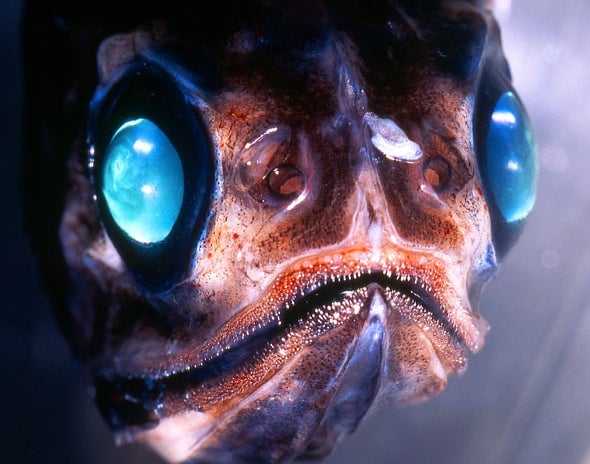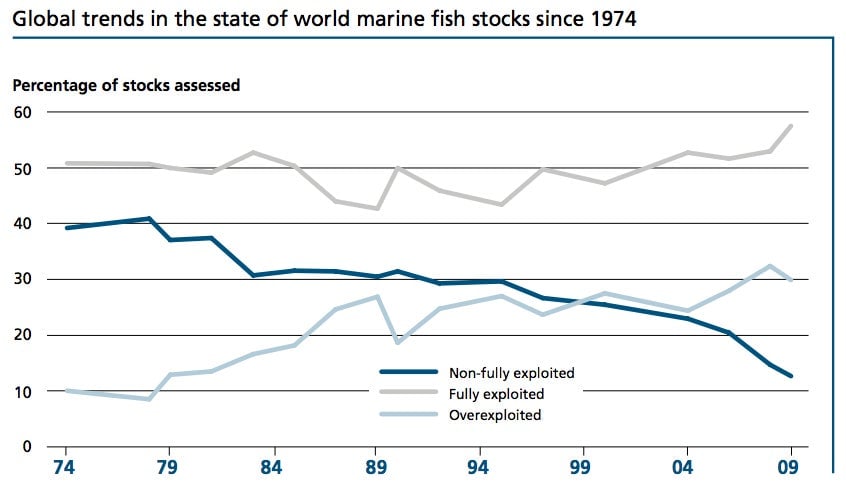One way to ease the overfishing crisis is to learn to eat small, bony fish
When scientists recently announced that there are at least 10 times more fish in the sea than we thought—and that 95% of it is “untouched by fishers“—some hailed the end of freak-outs about overfishing. Alas, these newly counted fish are “mesopelagic,” meaning that they hang out in the middle of the oceans, below 200 meters (656 feet). The vast majority look less like salmon than Gollum—they’re lean, big-eyed, knobby fish that are generally not so appetizing.

When scientists recently announced that there are at least 10 times more fish in the sea than we thought—and that 95% of it is “untouched by fishers“—some hailed the end of freak-outs about overfishing. Alas, these newly counted fish are “mesopelagic,” meaning that they hang out in the middle of the oceans, below 200 meters (656 feet). The vast majority look less like salmon than Gollum—they’re lean, big-eyed, knobby fish that are generally not so appetizing.
But you don’t have to dive very deep to find a bounty of fish that humans don’t deign to eat. And that, argues a recent paper (paywall), is a big reason behind our overfishing woes.
“Fishing pressure on a limited number of species is not the only reason causing overfishing—it’s [also] because people are only trying to catch a small number of species,” says Zhou Shijie, a marine biologist at CSIRO, Australia’s national science agency, and one of the paper’s authors. “Trawl fisheries may catch several hundred of species, but only a small fraction is commercial species that you see in Western markets.”
In fact, around 30% of the seafood sold each year comes from just 10 species of fish (pdf, p.53). Nearly all have been depleted to the point that it’s impossible to catch more of them. In fact, only about 1,000 fish stocks (which counts the same species multiple times for the different regions it lives in) end up sold in markets today. That’s around 1,600 if you include mollusks and crustaceans. And it’s out of 16,764 known marine fish species.

This is highly destructive. In addition to killing off a handful of commercially valuable species, overfishing also upsets the vastly intricate ecosystem that’s formed around that species.
And then there are the nearly 7.3 million tonnes (8.1 million tons) of other fish caught in the process but that never make it to land. For instance, in tropical prawn fisheries, says Zhou, around 80-90% of the catch is dumped into the sea. That’s alarming, considering that the vast majority of them are already dead or fatally wounded by the time they’re tossed back.
Why does this happen? Consider what happens when a tuna fisherman catches some mahimahi, a potentially valuable, though lower-value, commercial fish. Given the limited space on his boat, it makes more economic sense to reserve that room—and the time required to store the catch—for the higher-value species. Alternatively, he might not be licensed to catch mahimahi. Or he might even throw back tuna, if it’s smaller than what regulations allow.
The scary thing is that, the more industrial fishing operations become—using more powerful engines and bigger, deeper-dropping nets—the more fish are killed for each one that shows up on a plate.
Tellingly, this is less of a problem in Asia and Africa, where a premium on protein means people cook a much wider range of species—and, for that matter, the whole fish (whereas most Western cultures prefer their fish beheaded).
Could consumers in wealthy countries catch on? Zhou, for one, is mildly optimistic. ”I think a large proportion of the currently low-value species of fish will taste good,” he says. “Some small ones—they have small bones but you [just] need to know how to prepare them.”